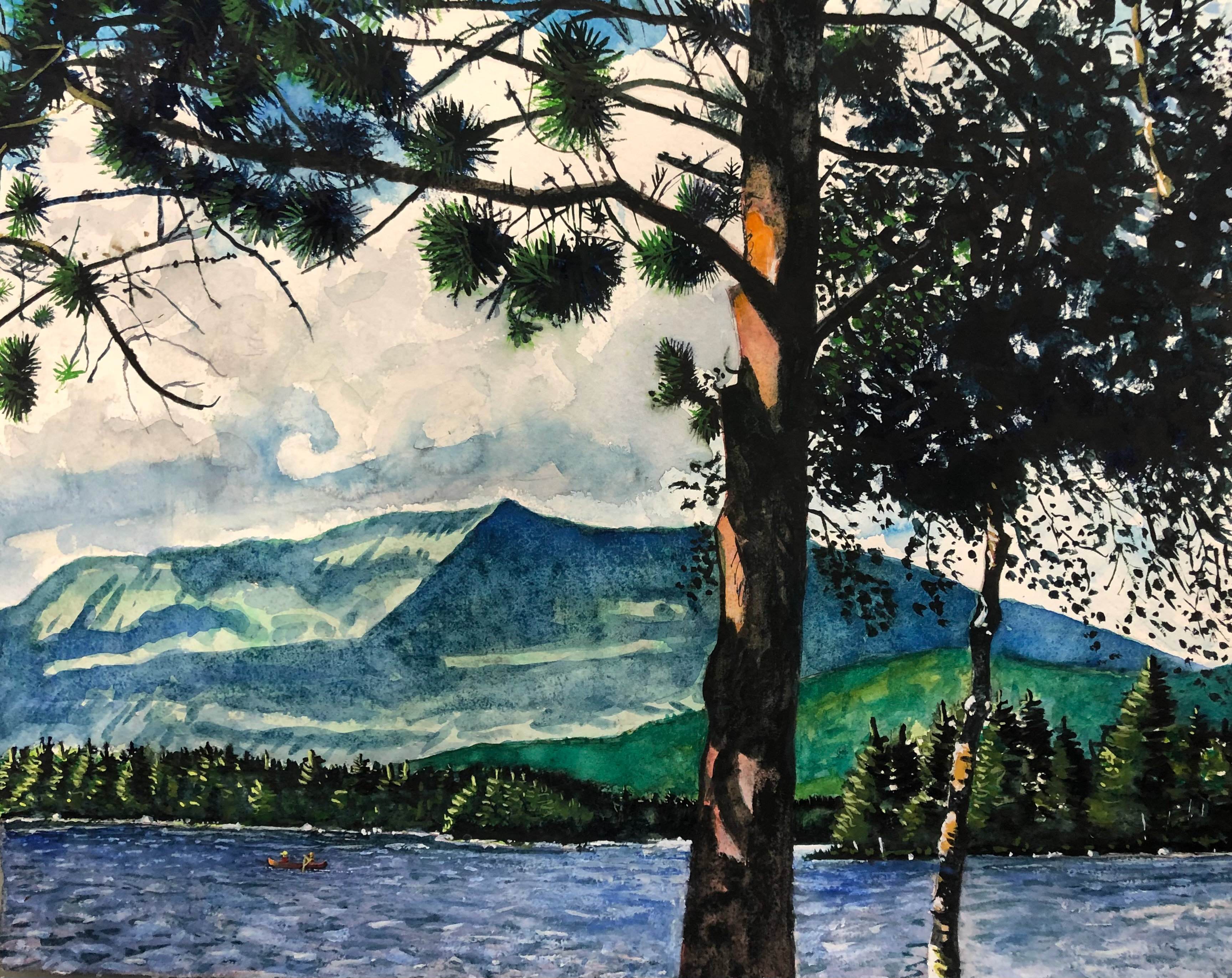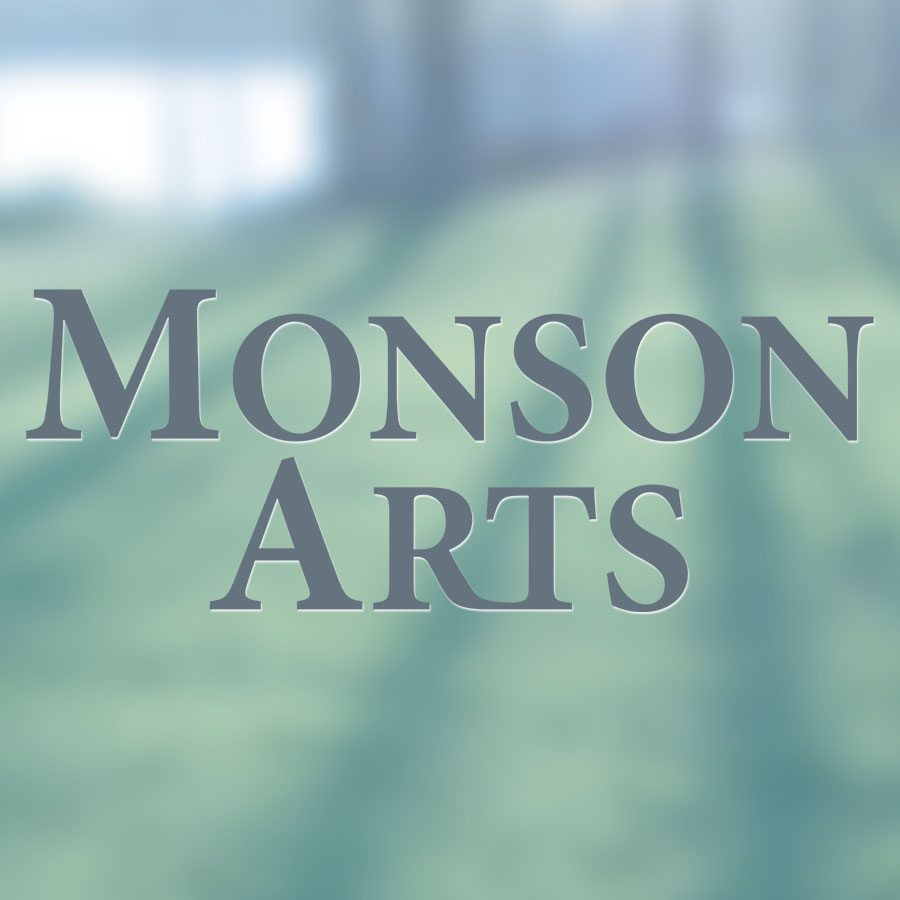
A native Mainer, Ed Nadeau is an Associate Professor at the University of Maine in Orono teaching advanced courses in painting and drawing. His area of research is the history, manufacture and use of traditional artists materials along with current advancements of new technologies and materials that can be adapted for artists’ uses. His paintings have been exhibited widely, and are in many private collections both nationally and internationally. Professor Nadeau will be leading the week-long Painting the Maine Woods with Egg, Milk and Water workshop starting July 9th. Monson Arts recently asked Ed a few questions on his background and his interest in marrying traditional paint mediums with 21st century uses.
Monson Arts: On your website you mention that your grandfather and both of your parents were artists. What was it like growing up surrounded by that creative energy and how did that influence you in pursuing an education that ultimately led you to becoming a college professor, teaching art?
Ed Nadeau: My parents and my grandfather were not professional artists, but my mother loved painting and was always taking a painting class at the YMCA or the High School.
My father loved to paint as well and I have photos of him painting watercolors from the dock at the lake. He also, and this is a really fond memory, worked on oil painting portraits of my mother posing in our kitchen while cooking dinner at the same time as me and my three siblings were running around the house. He did really quite well with the portraits! Even in the chaotic domestic setting!
My brother and I would go hunting with my grandfather, and often times when we came back from the woods, my grandfather would, with scissor and paper, cut out three dimensional paper figures of us in the act of hunting, shooting at a deer etc. They were wonderful little cutouts. (He would do one of the deer as well, perhaps running away, as we never really shot anything with success).
So from these three people I received my first art lessons, not in a formal way, but in a very creative, integrated into everyday life way. I learned that making art was part of everyday life.
MA: Your class at Monson Arts will explore three types of water medium materials and techniques: egg tempera, casein, and watercolor. This is inline with your deep interest in “researching the history, manufacture and use of traditional artists materials.” What intrigues you about the differences between them and the potentiality that exists in their mixed use for an artist? How does one start to both understand those differences and integrate them on one canvas?
EN: The three mediums that I will be presenting in my workshop are three very traditional water mediums, but offer new opportunities for the 21st century artists.
I will be showing the students how to make these paints in their home studios and how they can be adapted to the processes of 21st century artists.
For example it is very convenient to grab an egg from the fridge, mix it with water and a little pigment to create one of the most important and permanent painting mediums in history. One can use egg tempera as a medium alone or as an underpainting for oil paint or acrylics etc. The possibilities are endless.
And the same for the other two mediums. They are very versatile and have a proven track record.
MA: What is it about the Maine Woods that you find inspiring as a painter and is there anything about the Monson area in particular you look forward to engaging with?
EN: When I say “The Maine Woods”, it brings together many aspects of growing up here.
As I mentioned in question one, it was important for my grandfather to teach his grandchildren “how” to hunt. It was a very important part of his life as he grew up in a very large French Canadian Catholic family and it meant survival for them.
But the best part for me was spending time in the woods with my grandfather and hearing his stories about bear hunting or trains going off the tracks in the Maine mountains or his being chased by game wardens for illegal hunting (as I mentioned they had to survive) or any other tall tales he loved to tell.
Another aspect of being in the woods with him as a boy especially, was the sense of mysteriousness of the actual, deep dark woods that we were walking through at any given moment. I always felt that there was something exciting about to happen around the next bend. Of course my grandfather’s tales heightened the expectations!
Also there is the simple beauty of the actual woods and “landscape” itself. The mountains and lakes and rivers and the ocean and blizzards etc. All inspire me to react in a creative way.
I do understand that our natural environment is changing, but I think Maine’s natural beauty and the people who live here still endure. Enough for me to create new relevant, 21st century artwork.
I look forward to coming to Monson to be part of the arts community and to share with the students the process of making art through traditional mediums while using them to capture the never ending narratives that the Maine woods has to offer.
Once last thought. I want to say that I am not painting “nostalgia” concerning the history and by gone days of Maine. What I learned from my creative family is the “how” of the creative process in response to what is going on around in the present.
There is still space in Ed Nadeau’s class, Painting The Maine Woods With Egg, Milk, And Water, that runs from July 9th through July 15th at Monson Arts. Further details and sign-up are available HERE.

 Time and space to create.
Monson Arts is a new artists’ residency and arts center in Monson, Maine. Programs include residencies for artists and writers, intensive shorter workshops, and educational partnerships with area secondary schools.
Time and space to create.
Monson Arts is a new artists’ residency and arts center in Monson, Maine. Programs include residencies for artists and writers, intensive shorter workshops, and educational partnerships with area secondary schools.